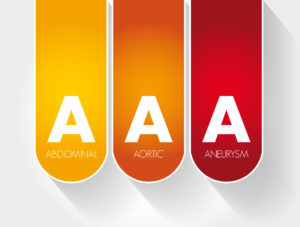
There are countless blood vessels in the human body. In fact, if you were to take every vein and vessel from an average person and line them up, it would stretch across roughly 60,000 miles!
Healthy veins and vessels are crucial to maintaining a healthy body, but sometimes vascular diseases can develop. In this article, we’re looking at one of these diseases, the abdominal aortic aneurysm.
What Is the Abdominal Aorta?
Before diving into what an abdominal aortic aneurysm is, let’s first address the aorta. As the body’s largest artery, the aorta is a crucial vessel that carries blood away from the heart and throughout the chest and abdomen. The abdominal section of the aorta can be found within the torso just in front of the spine.
What Is an Abdominal Aortic Aneurysm?
If any area of the aortic wall becomes weakened, it could expand like a balloon as blood continues pumping through it. This bulging effect is known as an aneurysm. Should one develop in the abdominal area of the aorta, it is called an abdominal aortic aneurysm, or AAA (pronounced triple-A).
AAAs tend to develop gradually and usually take years to become noticeable. As an aneurysm progresses, it becomes more likely to rupture, which would become a severe medical emergency.
Causes of AAA
AAA can develop from several issues, one of the most common being a degenerative disease called atherosclerosis, where components like fat and cholesterol accumulate to form plaque alongside the aortic walls.
Risk Factors for AAA
There are a few risk factors that could help lead to the development of an abdominal aortic aneurysm, including:
- Family history of AAA
- High blood pressure (chronic)
- Smoking
- Natural aging
AAA Symptoms
Before rupturing, patients can experience symptoms that point to abdominal aortic aneurysms. These symptoms include:
- Clamminess
- Continuous pain in the abdomen and back that may radiate downward toward the buttocks and legs
- Difficulty breathing
- Excessive sweating
- Feeling faint or dizzy
- Increased heart rate
- Nausea
- Vomiting
